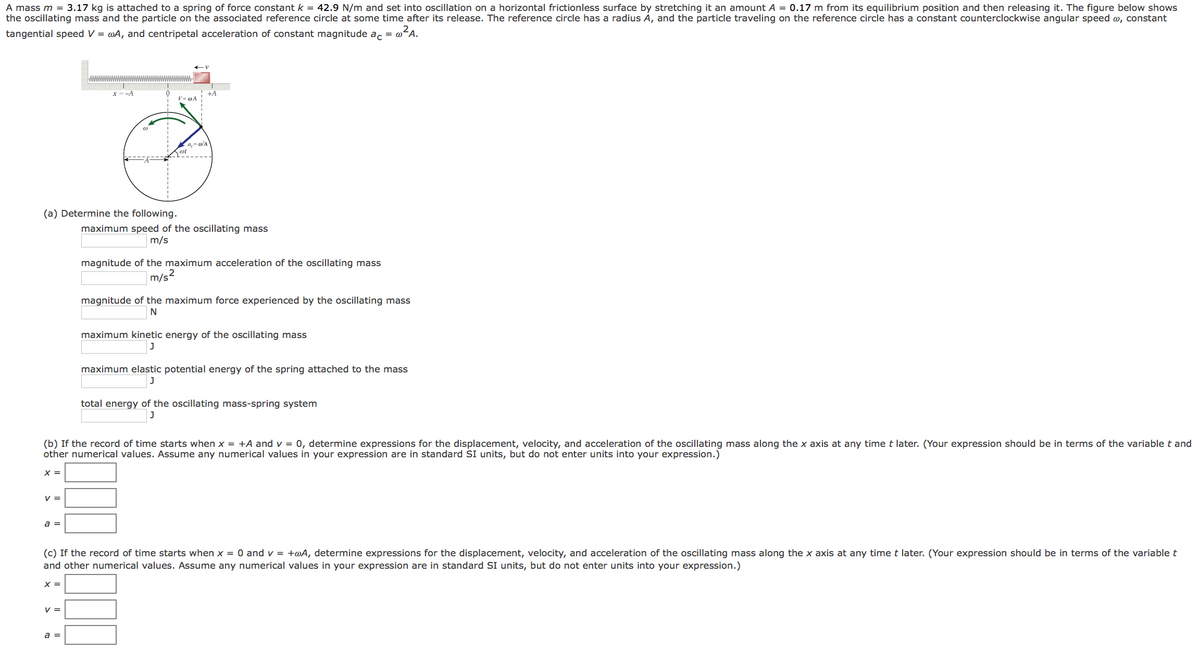he oscillating mass and the particle on the associated reference circle at some time after its release. The reference circle has a radius A, and the particle traveling on the reference circle has a constant counter. The figure below shows A mass m - 3.17 kg is attached to a spring of force constant k = 42.9 N/m and set into oscillation on a horizontal frictionless surface by stretching it an amount A = 0.17 m from its equilibrium position and th angular speed , constant tangential speed VA, and centripetal acceleration of constant magnitude ac = ²A. (a) Determine the following. V ******* x= M V. maximum speed of the oscillating mass m/s magnitude of the maximum acceleration. the oscillating mass m/s2 magnitude of the maximum force experienced by the oscillating mass N (b) If the record of time starts when x = +A and v= 0, determine expressions for the displacement, velocity, and acceleration of the oscillating mass along the x axis at any time t later. (Your expression should be in terms of the variable t an other numerical values. Assume any numerical values in your expression are in standard SI units, but do not enter units into your expression.) x= maximum kinetic energy of the oscillating mass J maximum elastic potential energy of the spring attached to the mass total energy of the oscillating mass-spring system J (c) If the record of time starts when x = 0 and v= +A, determine expressions for the displacement, velocity, and acceleration of the oscillating mass along the x axis at any time t later. (Your expression should be in terms of the variable t and other numerical values. Assume any numerical values in your expression are in standard SI units, but do not enter units into your expression.)
Simple harmonic motion
Simple harmonic motion is a type of periodic motion in which an object undergoes oscillatory motion. The restoring force exerted by the object exhibiting SHM is proportional to the displacement from the equilibrium position. The force is directed towards the mean position. We see many examples of SHM around us, common ones are the motion of a pendulum, spring and vibration of strings in musical instruments, and so on.
Simple Pendulum
A simple pendulum comprises a heavy mass (called bob) attached to one end of the weightless and flexible string.
Oscillation
In Physics, oscillation means a repetitive motion that happens in a variation with respect to time. There is usually a central value, where the object would be at rest. Additionally, there are two or more positions between which the repetitive motion takes place. In mathematics, oscillations can also be described as vibrations. The most common examples of oscillation that is seen in daily lives include the alternating current (AC) or the motion of a moving pendulum.
solve part b.

Step by step
Solved in 2 steps







